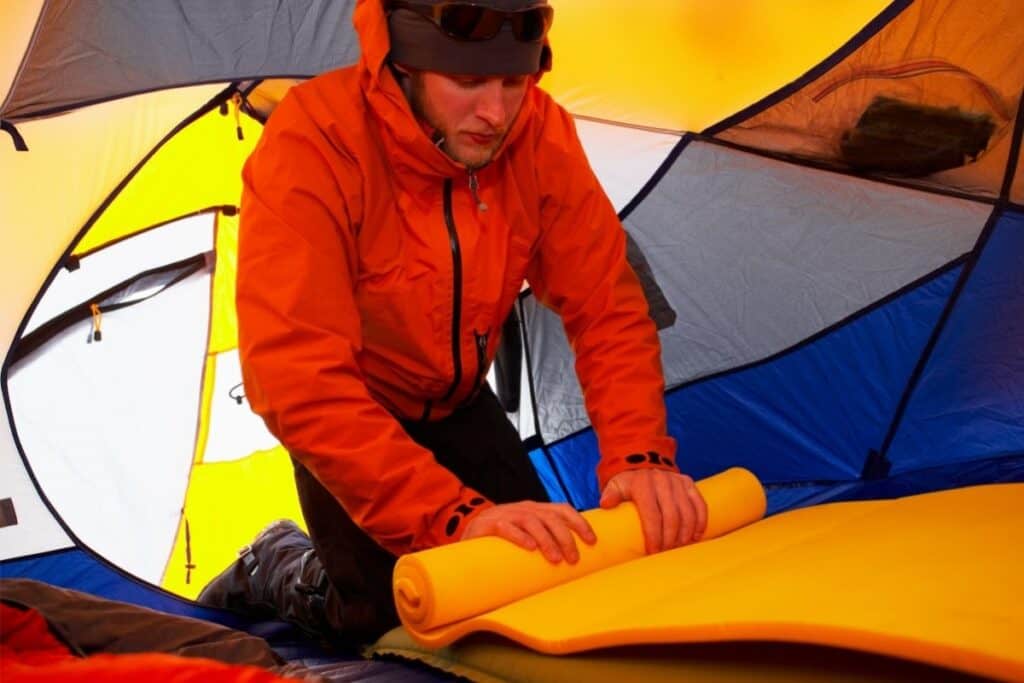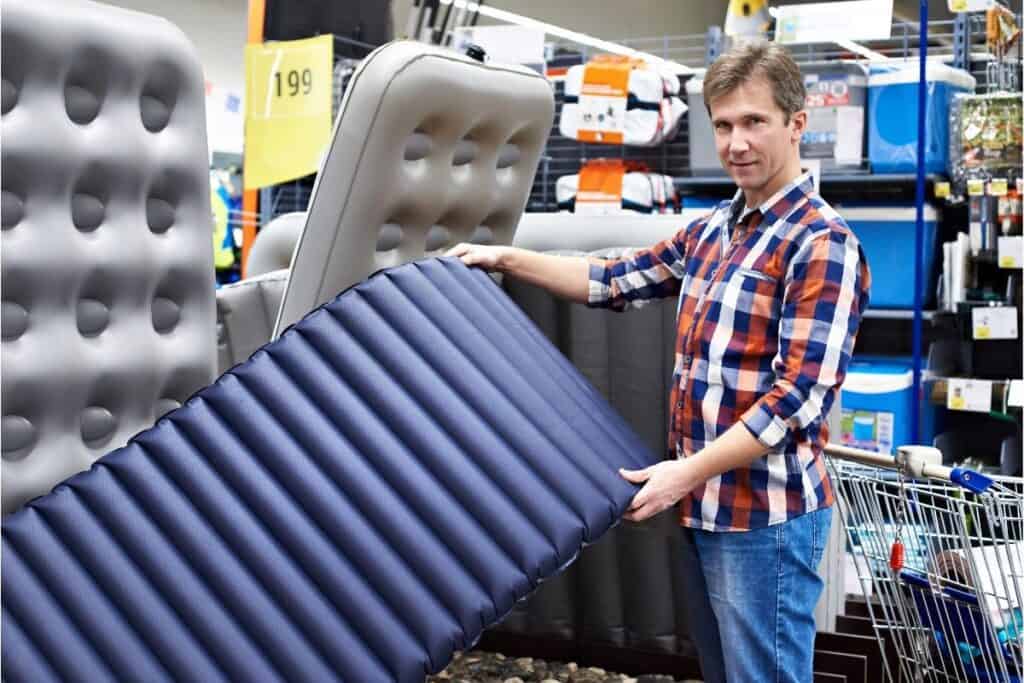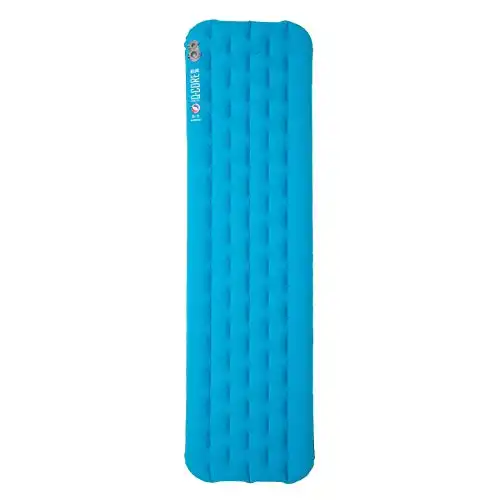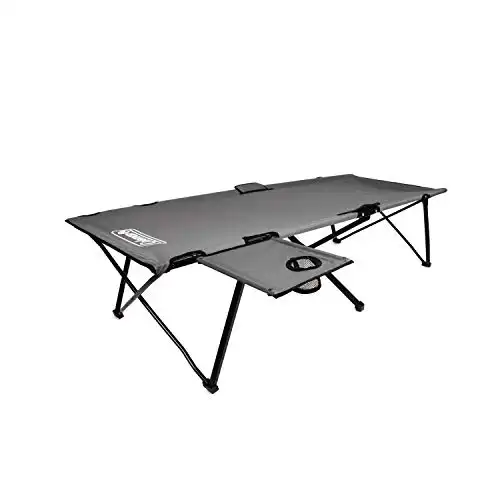
Sleeping pads have come a long way since the ye old days of fat foam, so thick it was like a bunch of yoga mats stuck together! These days, some models can be condensed tight enough that they take up less room and weight in a pack than a pair of thick woolen socks.
Not only that, but these smaller sleeping pads can fit inside your sleeping bag. But should sleeping pads go inside a sleeping bag?
Most people do not sleep with their camping pads inside of their sleeping bags because it can lead to issues with fit and warmth. Personal comfort, sleeping style, and size all play major factors in determining if this will be a good option for you or not.
Everyone loves sleeping pads because Mother Nature tends to be a hard lady. But the original purpose of sleeping pads was not to be a poor replica of your spring mattress. Instead, sleeping pads are meant to help keep you warm. But how well your pad helps keep you warm depends on how you use it and how you sleep.
Pros to Putting a Sleeping Pad Inside Your Sleeping Bag
#1 You can’t roll off it!
Technically, to maximize warmth, the best way to use your sleeping pad is to have it outside your sleeping bag. However, this is only true for campers who can manage to sleep on top of their sleeping pads for the entire night!
The sleeping pad does nothing for you if you spend most of the night next to it or with the pad scrunched at your feet.
If you are a person that tosses and turns, putting the sleeping pad in your bag will not only keep you on the pad but reduce your movement. (If you share a tent, your partner will probably be grateful for being kicked less, too.)
#2 It makes hammock camping easier
There are many positives to using a hammock while camping. However, they do allow a lot of heat to escape, making a sleeping pad near essential to staying warm.
But fitting a sleeping pad into your hammock can be tricky!
Also, it is near impossible to keep the sleeping pad in its proper place as you climb into the hammock. So the easiest way to save yourself a great deal of time and frustration is just to have the sleeping pad inside of the sleeping bag.
#3 Some people find it more comfortable
Yes, of course, if you roll around, a sleeping pad in your bag will be more comfortable than sleeping half off your matt.
But some people, especially those with smaller frames using bigger bags, find putting a pad in reduces the extra space. This feels cozier, less drafty, and more secure for some people.
Cons to Putting a Sleeping Pad Inside Your Sleeping Bag
#1 Your bag doesn’t stay as warm
With a sleeping pad inside the bag, you are compressing the bag’s material, reducing its effectiveness. Also, the bag is now touching the bottom of the tent or the ground, which is pulling heat away from the bag.
A sleeping pad’s primary purpose is to provide a cushion between the bag and the ground, so your bag stays dry and warm.
#2 Your bag doesn’t fit as well
Let’s be real – the majority of sleeping pads aren’t designed to be put inside a bag!
Adding a pad into the bag can create gaps and drafty areas, especially around the head and shoulders, allowing warm air out and cold air in. Bags work best when closed up, with as few gaps as possible.
Depending on your size, this could end up being a deal-breaker for bag fit.
#3 You can’t sleep on your side
A sleeping pad inside your bag only works if you can sleep on your back. If you are a side sleeper, a pad in the bag most likely won’t work.
Things will get twisted, crushed, and you’ll more than likely run out of space.
This may not be an issue for you – but it’s a deal-breaker for me!
#4 You have less room in the bag
A sleeping bag is a lot like the story of Goldilocks and the Three Bears: you need one that is just right. Too little and parts of your body will be left open to the elements, and that’s cold!
On the other hand, too much space leaves a lot of air to heat and can make for a cold night!
Lastly, putting a pad in your bag leaves less room for you to wear layers. To get maximum heat, you’d want a bag that fits you and your layers, not a pad. You also shouldn’t be sacrificing layers in order to stuff a pad into your bag.

How to Stay on Your Sleeping Pad
One of the most common reasons that people consider placing their sleeping pad inside of their sleeping bag is to simply keep it under them throughout the night!
Even people who don’t usually toss and turn at night can have trouble staying on their sleeping pad. So here are some suggestions to fix that without stuffing your sleeping pad into your bag.
#1 Don’t overinflate your sleeping pad
This is the number one reason people fall off their sleeping pads!
People often think more air = better sleep. But the pad is meant to conform to your body, not act as a thick balloon. A fully inflated pad can cause you to slide right off.
The pads are generally only supposed to be 50% full. One way to check is to fill it up, then lie on it. Then quickly open and close the valve so just enough air escapes so the pad is now “fitted” to you, making it less likely you’ll slide off.
#2 Add grip
Just like skateboarders use grip tape to keep them from slipping off their boards, you can use tape to your pad! This solution is best for people that struggle with their pad slipping on the surface of the groundsheet or the tent.
Puffy paint––yes, the same stuff seven-year-olds decorate t-shirts with––is an easy way to add some texture to your sleeping pad.
This is nice for people whose bags are slipping against the pad. The dried puffy paint won’t catch and rip your sleeping bag. You can be really artistic with the stuff or just dot it around the matt. The choice is yours.
Others use seam grip to add texture to their sleeping pad.
There are also straps you can buy to hold your sleep system together. For example, check out REI’s Co-op Sleeping Bag Slip-Not Straps.
#3 Get a wider sleeping pad
Sleeping pads come in a vast array of sizes and styles. Even if you are a backpacker carrying all your gear out, you might find a slightly wider pad easier to stay on.
#4 Look for a sleeping pad with side rails.
Sometimes all a person needs to stay on their sleeping pad is a slightly raised border. The Big Agnes range provides some great options.
Their Insulated Q-Core Sleeping Pad comes in three sizes: regular, Regular Wide, and Long Wide.
This three-season insulated sleeping pad provides the ultimate sleep experience when comfort and performance is the priority. Its I-beam construction helps reduce weight, while the large outer chambers keep you comfortably cradled in the middle of the pad and warm throughout the night.
#5 Consider a camp cot
This isn’t an option for anyone who’s backing or sleeping in a very small tent, but if you have space, a camping cot might be a great solution!
Not only does it add comfort but it also puts a stop to the annoyance of waking up on the ground because your pad squirted out from under your bag in the middle of the night.
Take comfort and camping to a whole new level with the Coleman Pack-Away Camping Cot. The removable side table keeps drinks, lanterns, and other essentials within easy reach. The included carry bag makes it easy to transport and store.
For those with bad backs, you also shouldn’t overlook the fact that a cot will likely be more supportive than a sleeping pad.
Conclusion
Camping should be an enjoyable activity, which includes a good night’s rest. So, in the end, where the sleeping pad goes––inside your sleeping bag or underneath––is a personal choice.
If you are dissatisfied with either option, consider modifying your pad or looking at a different model.


